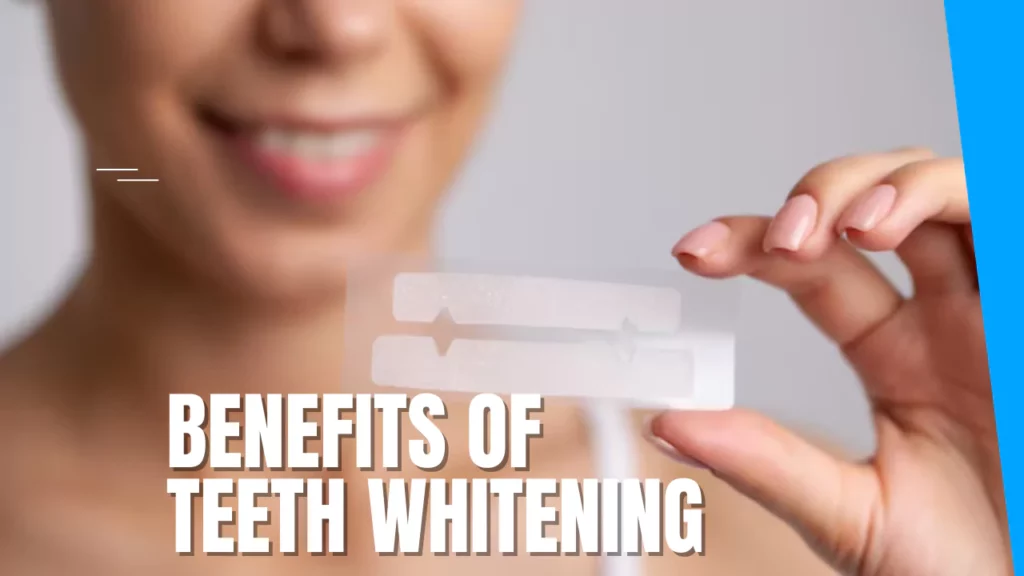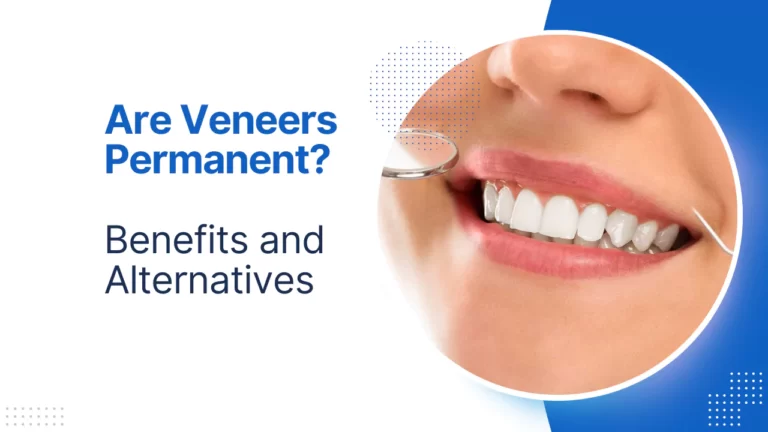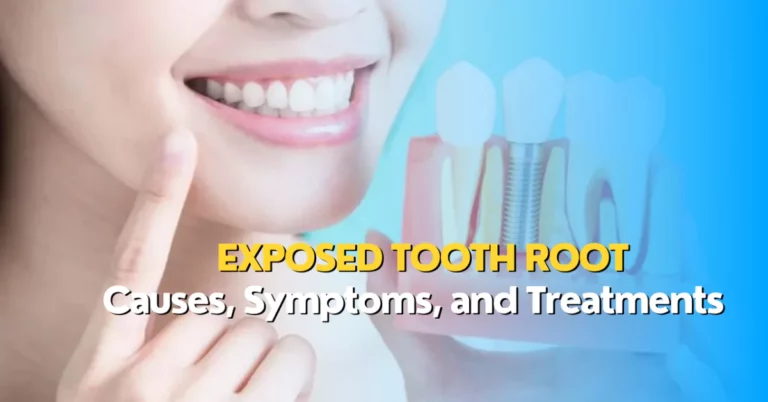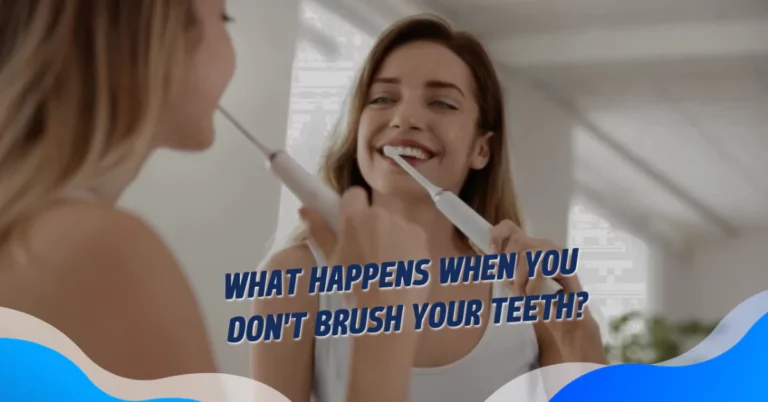Do Whitening Strips Work? Types and Tips for Effective Results
Teeth whitening is one of the world’s most popular cosmetic dental procedures. Millions want a brighter, whiter smile that boosts their confidence. But with so many options available, how do you know which is right for you? And do whitening strips work?
This article will discuss these questions and more. We will explain how stains develop on your teeth, how whitening strips target them, and what to look for when choosing a product.
Also Read: Composite Fillings: Why You May Need It?
Why Stains Develop and Prevention
Before we dive into how whitening strips work, let’s first understand why your teeth get stained in the first place.
Two main types of stains affect your teeth: extrinsic and intrinsic.
Extrinsic Staining
Extrinsic stains occur on the surface of your enamel, the hard outer layer of your teeth. They are caused by external factors such as food and poor oral hygiene. These substances contain pigments or acids that can adhere to and discolor your enamel over time.
The good news is that extrinsic stains are usually easy to remove with regular brushing, flossing, and professional cleaning.
Intrinsic Staining
Intrinsic stains occur within the dentin, the inner layer of your teeth beneath the enamel. They are caused by internal factors such as aging, genetics, or fluorosis. These factors can affect the formation of your dentin and change its color from yellow to brown or grey.
Unlike extrinsic stains, intrinsic stains are harder to remove with brushing. They require more intensive whitening treatments that penetrate the enamel and reach the dentin.
Also Read: How to Avoid Dry Socket? Causes and Prevention
Types of Teeth Whitening Strips

Different whitening strips that whiten your teeth are available in the market. Here is a summary of the main types of whitening strips.
Peroxide-based Teeth Whitening Strip
It is the most common and effective whitening strip that uses hydrogen peroxide or carbamide peroxide as the active ingredient. It can whiten your teeth by one to three shades on average after using it for a few days or weeks. However, it can also cause side effects, such as tooth sensitivity.
Charcoal Teeth Whitening Strip
This natural type of whitening strip uses activated charcoal as the main ingredient. It can absorb stains, toxins, and bacteria from your teeth and mouth and improve oral health. However, it may not be practical or safe for your teeth as little scientific evidence supports its claims.
Non-peroxide Teeth Whitening Strip
To whiten teeth, this gentle whitening strip uses alternative ingredients such as sodium bicarbonate, sodium chlorite, or enzymes. It can be safer and more suitable for people with sensitive teeth. However, it may be less effective than peroxide-based products and require more frequent applications.
Enzyme Teeth Whitening Strip
To whiten teeth, this natural whitening strip uses enzymes such as papain or bromelain. It can break down the protein bonds and help remove plaque and bacteria from your teeth. However, it may only suit some, as some may be allergic to these enzymes.
Also Read: How Long Do Veneers Last?
Whitening Strips Target Both Extrinsic and Intrinsic Stains
Whitening strips are designed to whiten your teeth. They work by applying a whitening agent to your teeth that breaks down the molecules that cause discoloration. The most common whitening agent in whitening strips is hydrogen or carbamide peroxide.
When you apply a whitening strip to your tooth, the peroxide gel reacts with the moisture in your mouth and releases oxygen molecules. These molecules then enter your tooth’s enamel and dentin layers and oxidize the stain molecules, making them smaller and less visible. As a result, your tooth becomes lighter in color and more reflective.
Also Read: Gumline Cavity: Exploring Types, Causes, Symptoms & Precautions
Benefits of Teeth Whitening

Here are some of the benefits of having a whiter smile:
Improved Confidence
One of the most prominent and essential benefits of teeth whitening is boosting your self-esteem and confidence. A bright smile can make you feel more attractive, happy, and positive. It can also improve social and professional interactions.
Enhanced Overall Appearance
Another benefit of teeth whitening is that it can enhance your overall appearance and complement your other features. A whiter smile can make your skin tone more radiant, your eyes more sparkling, and your lips luscious.
Reduced Staining
A third benefit of teeth whitening is that it can reduce the staining on your teeth caused by various factors such as food, drinks, tobacco, or aging. Removing these stains can restore your teeth’s natural color and shine and prevent further discoloration.
Improved Oral Health
A fourth benefit of teeth whitening is that it can improve your oral health and hygiene. By whitening your teeth, you can motivate yourself to take better care of them and follow good dental habits such as brushing.
Do Teeth Whitening Strips Work?
Now let’s discuss the central question: do whitening strips work? The short answer is yes; they do work for most people.
However, the degree and duration of their effectiveness may vary depending on several factors, such as:
- The type and concentration of the whitening agent used in the strips
- The type and severity of the stains on your teeth
- The condition and sensitivity of your teeth and gums
- The frequency and duration of using the strips
- The quality and fit of the strips
- The aftercare and maintenance of your teeth
In general, whitening strips can whiten your teeth after using them for a few days or weeks. However, depending on their circumstances, some people may see more dramatic results than others. Therefore, choosing a product that suits your needs and expectations is essential.
How Long Do Whitening Strips Take to Work?
The duration of whitening strips depends on the type and concentration of the product and your desired results. Most whitening strips require applying them once or twice daily for 10 to 30 minutes. Some products may require using them for a few days or weeks.
The results of using whitening strips may vary from person to person, depending on their factors. Some people may notice a difference in their teeth’ color after one or two applications, while others may need more time to see any changes.
However, the results of using whitening strips are temporary, and they may fade over time due to various factors such as aging, diet, lifestyle, or oral hygiene. Therefore, it is vital to maintain your teeth after using whitening strips.
What to Look for in Teeth Whitening Strips?
Now that you know how whitening strips work and what types are available, you may wonder how to choose the best product for your needs and expectations.
Here are some factors to consider when looking for whitening strips:
- Ingredient Safety
- Effectiveness
- Comfort Level
- Cost-Effectiveness
- Dentist Approval
- Customer Reviews
Side Effects of Teeth Whitening Strips
Whitening strips whiten your teeth by removing extrinsic and intrinsic stains from your enamel and dentin layers. However, they can also cause some side effects that may affect the appearance and health of your teeth.
Here are some of the possible side effects of using whitening strips:
Risk of Uneven Whitening
One of the possible side effects of using whitening strips is the risk of uneven whitening. It means that some parts of your teeth may become whiter than others due to various factors such as:
- The shape and size of your teeth
- The fit and quality of the strips
- The application and removal of the strips
- The exposure and contact of the strips with your teeth
Temporary Discoloration
Another possible side effect of using whitening strips is temporary discoloration. It means that your teeth may become darker or more yellow than before after using the strips due to various factors such as:
- The type and concentration of the whitening agent used in the strips
- The type and severity of the stains on your teeth
- The condition and sensitivity of your teeth and gums
- The frequency and duration of using the strips
The Danger of Gum Problems
Another possible side effect of using whitening strips is the danger of gum problems. It means that your gums may become irritated, inflamed, or infected after using the strips due to various factors such as:
- The concentration and application of the whitening agent used in the strips
- The quality and fit of the strips
- The sensitivity and condition of your gums
- The frequency and duration of using the strips
Tooth Sensitivity and Possible Damage
Another possible side effect of whitening strips is tooth sensitivity and potential damage. It means that your teeth may become more sensitive to hot, cold, or pressure stimuli after using the strips due to various factors such as:
- The concentration and application of the whitening agent used in the strips
- The type and severity of the stains on your teeth
- The condition and sensitivity of your teeth and gums
- The frequency and duration of using the strips
Disrupting Your Oral Microbiome
Another possible side effect of using whitening strips is disrupting your oral microbiome. It means that your mouth may become imbalanced in terms of the bacteria and fungi that live in it after using the strips due to various factors such as:
- The concentration and application of the whitening agent used in the strips
- The type and severity of the stains on your teeth
- The condition and sensitivity of your teeth and gums
- The frequency and duration of using the strips
Possible Yellow Spots
Another possible side effect of using whitening strips is potential yellow spots. It means that your teeth may develop yellow spots or patches after using the strips due to various factors such as:
- The concentration and application of the whitening agent used in the strips
- The type and severity of the stains on your teeth
- The condition and sensitivity of your teeth and gums
- The frequency and duration of using the strips
Tips to Maintain a White Smile After Teeth Whitening Strips
As we have seen, whitening strips can whiten your teeth. However, they can also cause some side effects that may affect the appearance. Therefore, it is crucial to maintain your white smile after using whitening strips.
Here are some tips:
Cut Back on Staining Foods
One of the essential tips to maintain a white smile after using whitening strips is to cut back on staining foods and drinks that can discolor your teeth over time. Limit your intake of these foods and beverages, or avoid them altogether.
Use a Straw
Another tip to maintain a white smile after whitening strips is to use a straw when drinking staining liquids such as wine or soda. It can help reduce the contact and exposure of these liquids with your teeth and prevent them from staining your teeth.
Follow Good Dental Hygiene Habits
Another tip to maintain a white smile after using whitening strips is to follow good dental hygiene habits, such as brushing and rinsing your mouth regularly. It can help remove any plaque, tartar, food debris, or bacteria that can cause disease to your teeth and gums.
Eat Plenty of Calcium
Another tip for maintaining a white smile after whitening strips is to eat plenty of calcium-rich foods such as milk or almonds. Calcium is an essential mineral that helps strengthen and protect your enamel from damage.
Limit Your Sugar Intake
Limiting sugar intake is another suggestion for keeping a white smile after using whitening strips. One of the main factors contributing to gum disease and tooth decay is sugar. It fuels the oral bacteria that create acids that eat away at your enamel and dentin, resulting in cavities.
Rinse With Water After Eating
Another tip for maintaining a white smile after using whitening strips is to rinse your mouth with water after eating anything. It can help remove pigments or acids that discolor your teeth over time.
Use Whitening Toothpaste Regularly
Another tip for maintaining a white smile after whitening strips is to use whitening toothpaste regularly. Whitening toothpaste is a type of toothpaste that contains mild abrasives or bleaching agents that can help remove surface stains from your teeth and make them look whiter.
Avoid smoking
Another tip for maintaining a white smile after whitening strips is avoiding smoking. Smoking is one of the worst habits for oral health and appearance, as it can cause staining.
Visit Your Dentist Regularly
The last but not most minor tip for maintaining a white smile after whitening strips is to visit your dentist regularly. Your dentist can provide you with professional cleaning and check-ups that can help improve the appearance and health of your teeth.
Frequently Asked Questions (FAQs)
Are Whitening Strip Results Permanent?
No, whitening strip results are not permanent, and they may fade over time due to various factors such as aging, diet, or oral hygiene. Therefore, you may need to touch up your teeth every few months or years with either professional or over-the-counter products to maintain your white smile.
How Do I Know If Teeth Whitening Strips Are Working?
You can know if teeth whitening strips are working by comparing your teeth’ color before and after using them. You can use a shade guide or take photos of your teeth to track your progress.
What Happens If You Leave Whitening Strips For Longer Than 30 Minutes?
If you leave whitening strips on longer than 30 minutes, you may increase the risk of sensitivity or damage to your teeth. You may also over-whiten your teeth and make them look unnatural or unhealthy. Therefore, you should follow the instructions carefully.
Do Dentists Approve of Whitening Strips?
Some dentists approve whitening strips as a safe and effective way to whiten your teeth at home. However, some dentists do not agree with whitening strips as they may cause some side effects. Therefore, you should always consult your dentist before using any whitening product.
Do Whitening Strips Work for Everyone?
No, whitening strips do not work for everyone as they may not be suitable or practical for some people depending on multiple factors, such as:
- The type and severity of the stains on their teeth
- The natural color of their teeth
- The condition and sensitivity of their teeth and gums
- The presence of any artificial materials on their teeth, such as crowns, veneers, fillings, or implants
Conclusion
Whitening strips are one of the most popular and convenient ways to whiten your teeth at home. They work by applying a peroxide-based gel to your teeth that breaks down the stain molecules in your enamel and dentin layers. However, whitening strips have drawbacks.
Therefore, choosing a product that suits your needs and expectations is crucial. Whichever option you choose, you should always take care of your teeth and gums by following good oral hygiene habits, eating a balanced diet, and visiting your dentist regularly.






